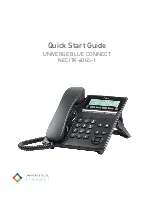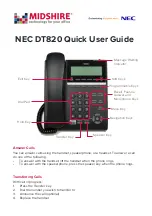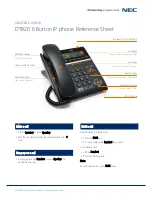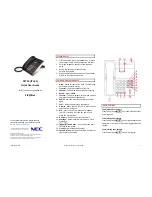
D9000/D7000 Series Operation & Installation Manual
Page 16
74-07692-000-C 4/97
D8132 boosts battery backup: Adding a D8132
Battery Charger Module supports additional
batteries of up to 36 Ah capacity if required.
Failure to add a D8132 will cause situations that
create false alarms and differential voltage levels.
You can use the D8132 Battery Charger Module
to connect two additional batteries for a total of
four. The panel plus any connected D8132
modules and AUX power supplies must be on the
same AC circuit so they will discharge evenly if
AC power fails. The number of D8132 modules is
determined by the number of available outlets on
the same circuit. See the
Standby Battery and
Current Rating Chart in this manual for battery
standby time calculations. Note: Dual batteries
are required for fire applications.
WARNING: Do not connect the D8132 module to
the panel’s battery terminals 4 and 5. Always
connect to AUX outputs (see Figure 5 on page
23).
Battery Supervision
When the battery voltage drops to 13.8 VDC, the
yellow Charging Status LED lights. When the
battery drops to 12.1 VDC the red Low Battery
LED lights and the panel, if programmed for
power supervision, transmits a BATTERY LOW
report in the Radionics’ Modem IIIa
2
™
Communication Format. It transmits a
TROUBLE
ZN 9
report in the BFSK format.
If the battery is missing or shorted, the red Low
Battery LED flashes at the same rate as the green
Operation Monitor LED. If the panel is
programmed for power supervision, it transmits a
BATTERY MISSING
report in the Radionics’
Modem IIIa
2
™ Communication Format, or
TROUBLE ZN 9
report in the BFSK format.
When battery voltage returns to 13.7 VDC the
Low Battery LED goes out. If the panel is
programmed for power supervision, it transmits a
BATTERY RESTORAL
report in the Radionics’
Modem IIIa
2
™ Communication Format or
RESTORAL ZN 9
report in the BFSK format. At
13.9 VDC the Charging Status LED goes out.
Investigate low battery reports immediately: If
primary (AC) power is off and the discharge
continues, the panel becomes inoperative when
the battery voltage drops below 10.2 VDC.
Battery Charging Circuit
Float Charge
The float voltage for the battery charging circuit is
13.5 to 13.9 VDC at a maximum current of 1.4
Amps. If float voltage drops lower than 13.5 VDC,
the Charger LED will illuminate.
Loss of AC Load Shed Relay protects battery:
During an AC power loss the battery supplies all
power to the security system. If the battery voltage
falls below 10.2 volts during an AC power loss, a
“load shed” relay isolates the battery from the
panel and disables the panel. Load shed protects
the battery from being damaged by deep
discharge. When AC power restores, the load
shed relay resets and battery voltage is again
available.
Overcharge Load Shed With AC Present: If
more than 1.4 amps from the panel is detected,
the panel shuts down. Remove all loads to the
panel and disconnect AC power. Add a new
battery and reconnect AC power.
Reset the panel by momentarily placing the reset
pin in the disable position. See Figure 3. The red
Low Battery LED continues to flash until you reset
the panel.
A shorted battery condition is created either by a
shorted cell inside the battery or by a short on
terminals 4 and 5. A shorted battery may
generate WATCHDOG RESET reports.
Battery Discharge/Recharge Schedule
Discharge Cycle
AC OFF
AC fail report when AC fails if panel
is programmed to report AC failure
at
occurrence.
13.9 VDC
Charging float level
13.8 VDC
Charging Status LED on
12.1 VDC
Low Battery & AC fail reports if
programmed; Low Battery LED on
10.2 VDC
Battery load shed (processing
functions continue if AC is present)
Recharge Cycle
AC ON
Load shed relay resets, battery
charging begins, battery trouble and
AC restoral
reports sent.
13.7 VDC
Battery restoral reports sent, Low
Battery LED off
13.9 VDC
Charging Status LED off, battery
float charged
www.PDF-Zoo.com
firealarmresources.com
















































